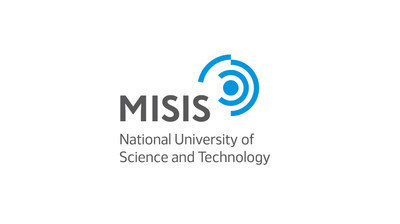Action required: Please refresh your browser
We have recently implemented some changes that require a hard refresh of your browser: Please hold down the CTRL-key and press the F5 key.
After a successful hard refresh, this message should not appear anymore.
More details about this topic are available here »
| NUST MISIS Scientists Develop a Safe Drug to Treat Eye Inflammation | ||
| By: PR Newswire Association LLC. - 13 May 2021 | Back to overview list |
|
|
MOSCOW, May 13, 2021 /PRNewswire/ -- The Russian-American research team has presented a new therapeutic method using nanoparticles of an antioxidant enzyme, developed specifically for the eyes. It relieves inflammation and repairs tissue without causing side effects: irritation and allergies, even at high doses. The results of the research are presented in the international scientific journal Biomedicines.  Inflammatory eye diseases remain the most common clinical problem in ophthalmology. The secondary processes associated with eye inflammation, such as overproduction of reactive oxygen species (ROS) and exhaustion of the endogenous antioxidant system, frequently lead to tissue degeneration, vision blurring, and even blindness. Basically, ROS promote the death of body cells and tissue degeneration due to their damage to many cell components, including the cell membrane, DNA, proteins, enzymes, etc. Excessive release of reactive oxygen species can cause significant damage not only to the inflamed area but also to the surrounding normal tissue. This is especially important for the eyes, since the transparency of the cornea and lens, as well as the functioning of the photoreceptor apparatus, depends on their highly ordered structures, and excessive tissue damage impairs visual function. The cornea, the lens at the tissue level have an ordered structure, so if they are damaged, their structure is disturbed, and hence the visual function will be compromised. Antioxidant enzymes such as superoxide dismutase are known to be potent scavengers of reactive oxygen species. However, their delivery to the ocular tissues is a serious problem due to their very limited permeability, since the eye is a rather isolated organ, and the pathological processes within it are preferably treated not via systemic but by local drug intake. A team of scientists from NUST MISIS, Lomonosov Moscow State University, Helmholtz National Medical Research Center of Eye Diseases and the University of North Carolina solved the problem of overproduction of free radicals by creating multilayer polyion nanoparticles of the superoxide dismutase enzyme (Nano-SOD1), designed specifically for the eyes. "The ability of Nano-SOD1 to reduce inflammation in the eye was examined in vivo in rabbits with model immunogenic uveitis — the inflammation of the inner vascular tract of the eye. It was shown during preclinical studies that topical instillations of Nano-SOD1 were 35% more effective in reducing the manifestations of uveitis compared to the free enzyme SOD1. In particular, we noted statistically significant differences in such inflammatory signs of the eye as corneal and conjunctival edema, iris hyperemia and fibrin clots," said Alexander Vaneev, engineer of the NUST MISIS Biophysics Research Laboratory, one of the study authors. The scientist explained that during the development, the SOD1 nanoparticles previously created by the team were used. However, the new formulation was specially manufactured for topical use in ophthalmology. Optimization of the technology made it possible to increase the efficiency in obtaining Nano-SOD1, as well as to achieve the greatest degree of drug stability. According to the researchers, Nano-SOD1 penetrates into the inner structures of the eye more than 2 times more efficiently than SOD1 itself. It is much better retained on the surface of the cornea and retains enzyme activity in the eye for a much longer time than the regular SOD1 enzyme without inclusion in the composition of nanoparticles. Scientists have observed inflammation decrease and restoration of antioxidant activity in the eyes. At the same time, scientists have found during tests that Nano-SOD1 does not show any toxicity (eye irritation, acute, chronic and reproductive toxicity, allergenicity, immunogenicity, mutagenicity) in a wide concentration range and even at extremely high doses used. At the moment, the developers continue a series of preclinical trials of the obtained drug. Link: https://en.misis.ru/university/news/science/2021-04/7330/ Logo: https://mma.prnewswire.com/media/955872/NUST_MISIS_Logo.jpg 
|
||
|
|
||
 | Back to overview list | |



